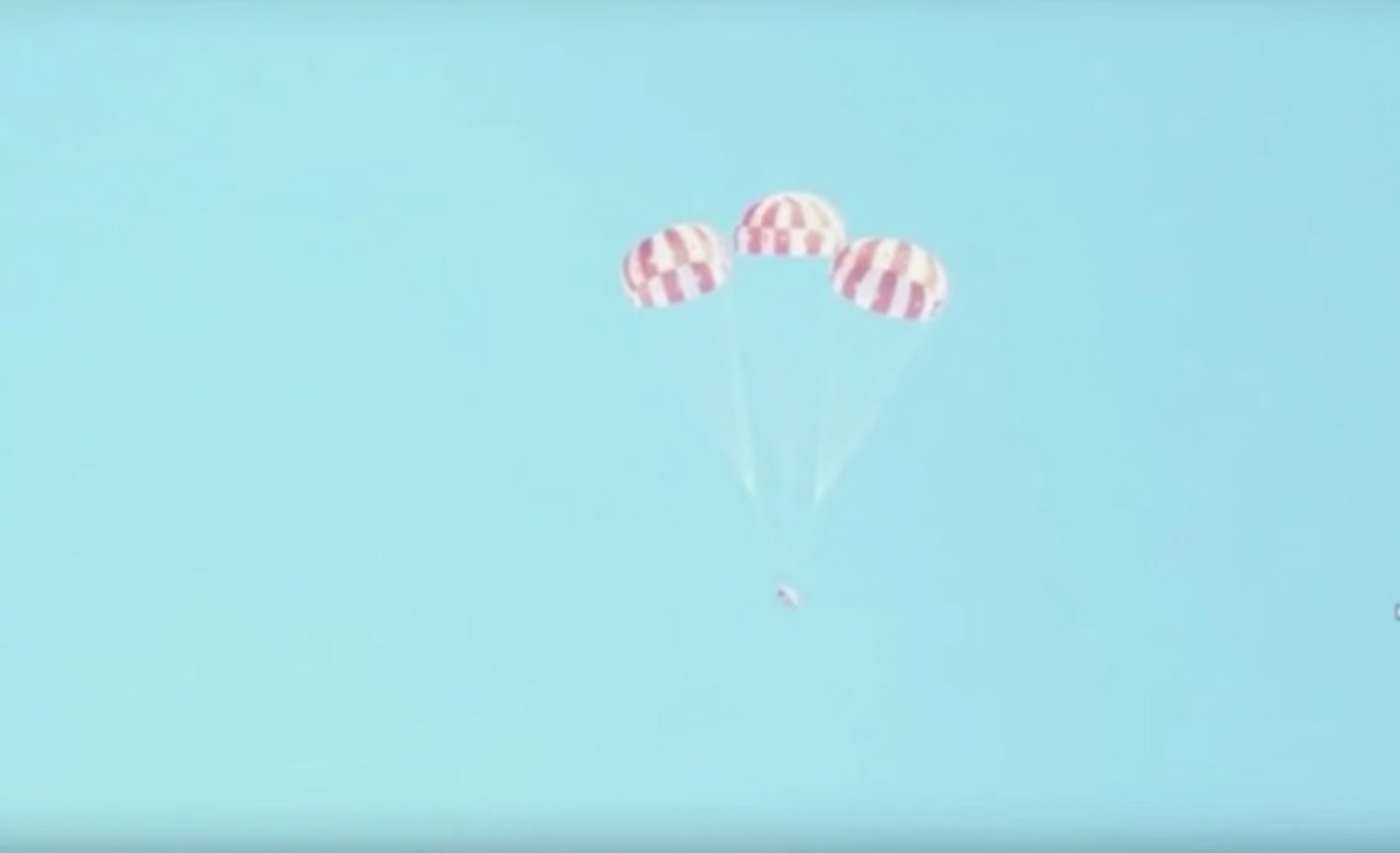NASA's Orion Space Capsule Aces Final Parachute Test Before Moon Flight
A test version of NASA's Orion spacecraft safely touched down today (Sept. 12) under three parachutes, completing the final parachute test to get the vehicle ready for a journey around the moon and back.
While it will take several weeks to go through the data, early indications are that the test was a success. In this test, which wrapped up around 11 a.m. EDT (8 a.m. PDT, or 1500 GMT), Orion safely deployed all its parachutes in sequence after being released from a C-17 aircraft about 6 miles (9.5 kilometers) up.
Orion then touched down at the U.S. Army's Yuma Proving Ground in Arizona near a group of spectators and NASA officials. Among them was Orion program manager Mark Kirasich, who spoke briefly on NASA Television before the test.
"Orion is our new human exploration spacecraft, and this is a spacecraft that will take people farther in space than we've ever gone before," Kirasich said. The spacecraft has to endure searing heat upon coming back to Earth, because it will return at high speeds from far away; in 2019 or 2020, for example, an uncrewed Orion, launched with NASA's new Space Launch System rocket, is expected to loop around the moon on a mission that will take several weeks.
"After today if all goes to plan, we are ready for flight. That is just astounding," added astronaut Randy Bresnik on NASA Television. He joked that he was looking forward to counting to 11, representing the number of parachutes Orion had to deploy before reaching the ground.

Orion has four sets of parachutes that, working together, will bring the spacecraft home safely from trips to the moon or from deep space. The first set is three forward bay cover parachutes, which are supposed to release a cover that protects Orion during the fiery re-entry at 32 times the speed of sound.
Next, Orion deploys two drogue parachutes to stabilize the spacecraft and slow it down. Following that, three pilot parachutes are released to help deploy the three main parachutes. The main chutes then remain deployed all the way until Orion touches down.
Get the Space.com Newsletter
Breaking space news, the latest updates on rocket launches, skywatching events and more!
This parachute test is the last one for Orion after a decade of development, Kirasich said. The spacecraft is expected to form the backbone of NASA's deep-space exploration plans, which include a Lunar Orbital Platform-Gateway space station around the moon in the next decade.
Follow us @Spacedotcom, Facebook and Google+. Original article on Space.com.
Join our Space Forums to keep talking space on the latest missions, night sky and more! And if you have a news tip, correction or comment, let us know at: community@space.com.

Elizabeth Howell (she/her), Ph.D., was a staff writer in the spaceflight channel between 2022 and 2024 specializing in Canadian space news. She was contributing writer for Space.com for 10 years from 2012 to 2024. Elizabeth's reporting includes multiple exclusives with the White House, leading world coverage about a lost-and-found space tomato on the International Space Station, witnessing five human spaceflight launches on two continents, flying parabolic, working inside a spacesuit, and participating in a simulated Mars mission. Her latest book, "Why Am I Taller?" (ECW Press, 2022) is co-written with astronaut Dave Williams.









